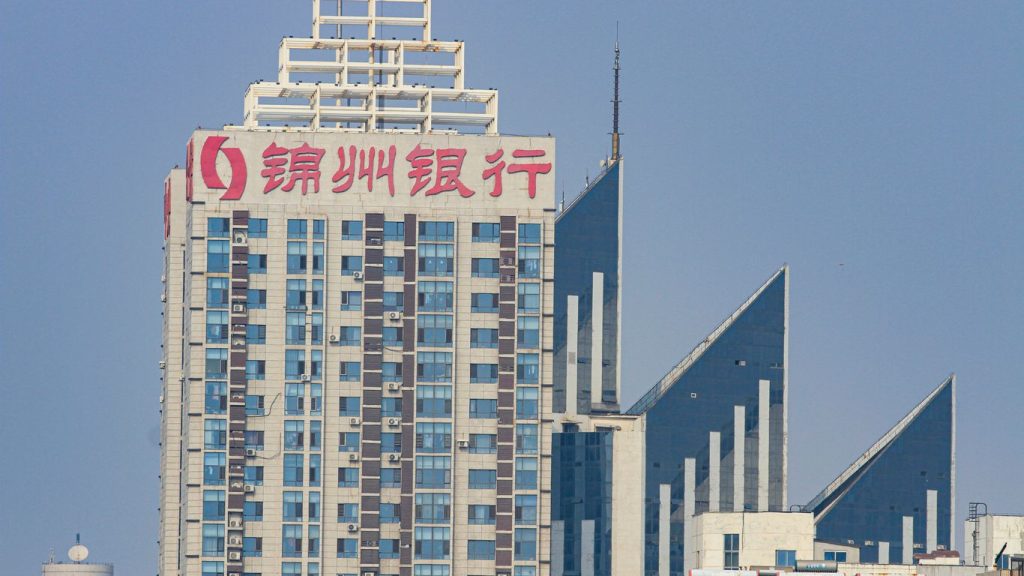Planning for retirement can feel like a big task, and picking the right plan is key. We’re looking at China Taiping’s i-Retire II for 2025 to see how it stacks up. Many people in Singapore are thinking about how to make their savings last, and annuities like this are a common way to get a steady income later on. This review will break down what the i-Retire II plan offers, who it might be good for, and how it compares to other options out there. Let’s get into the details.
Key Takeaways
- China Taiping i-Retire II is designed to provide a steady stream of income during retirement, with both guaranteed and projected payout options.
- The plan offers cost-effectiveness, meaning lower premiums for the guaranteed income it provides, and a simplified underwriting process with no medical checks required.
- A potential drawback is that SRS funds cannot be used for single premium payments, and the ‘Loss of Independence’ benefit has specific payout limitations.
- When compared to plans like Singlife Flexi Retirement II, i-Retire II stands out for its affordability and straightforward approach to guaranteed income.
- China Taiping is a financially strong company with a long history, operating under Singapore’s regulatory framework, which adds a layer of trust to its products.
China Taiping i-Retire II: An Overview

Understanding Retirement Planning Needs
Planning for retirement is a big step, and it’s something many people put off until later. But the sooner you start, the better your chances of having a comfortable retirement. Think about what you want your retirement to look like – do you want to travel, pursue hobbies, or simply have a steady income stream? Your retirement goals will shape the kind of plan that’s right for you. It’s about making sure you have enough money to live the way you want when you stop working. Many people in Singapore look to plans like the i-Retire II to help them achieve this. It’s a way to build up savings specifically for those golden years. You can find more general information on retirement planning at Singapore Finance.
Key Features of i-Retire II
China Taiping’s i-Retire II is designed to provide a reliable income during your retirement years. One of its main draws is the flexibility it offers in terms of how you pay for it and how you receive your payouts. You can choose your premium payment term, whether that’s a single lump sum or spread out over 5, 10, or 15 years. Similarly, you can decide if you want your income to be paid out for 10, 20, or 30 years. A notable aspect is its simplified underwriting process, meaning you often don’t need a medical check-up to get started. This makes it a straightforward option for many. The plan also includes a Loss of Independence Benefit, which provides a payout if you become totally and permanently disabled.
Target Audience for i-Retire II
This retirement plan is generally suited for individuals who are looking for a straightforward way to secure a guaranteed income stream in their retirement. It’s particularly appealing to those who prioritize simplicity and predictability over complex investment features. If you’re someone who doesn’t need a lot of extra bells and whistles and just wants a dependable monthly payout, i-Retire II could be a good fit. It’s also a good option for people who prefer not to go through a lengthy medical underwriting process. The plan’s structure makes it accessible for a broad range of people planning for their future financial security. For those seeking guidance on various financial products, resources are available to help compare options, as seen on Singapore Finance.
i-Retire II Policy Illustration and Returns
When you’re looking at retirement plans, it’s really important to see how they actually perform. China Taiping’s i-Retire II is designed to give you a solid income stream later on. Let’s break down what a typical illustration might look like and what kind of returns you can expect. It’s not just about the numbers, but understanding how those numbers translate into your actual retirement.
Analyzing John’s Retirement Scenario
To get a clearer picture, let’s imagine a scenario for someone named John. John is 45 years old and wants to retire at 65. He decides to pay premiums for 10 years and wants to receive income for 20 years after he retires. This is a common setup, and it helps us see the potential growth and payout structure. It’s like looking at a map for your financial future, showing you the path from saving to spending.
Guaranteed vs. Projected Payouts
One of the key things with any insurance policy, including retirement plans, is understanding the difference between what’s guaranteed and what’s projected. With i-Retire II, you get a guaranteed monthly income. This is the amount you’re absolutely sure to receive, no matter what happens in the market. On top of that, there are projected payouts, which include non-guaranteed bonuses. These can boost your income, but they aren’t a sure thing. It’s good to have both, but always plan based on the guaranteed amounts first. This is similar to how you might budget your monthly expenses – you stick to the essentials first, then add extras if you have the money.
Here’s a simplified look at what John might expect:
| Feature | Guaranteed Amount | Projected Amount (Illustrative) |
|---|---|---|
| Monthly Income (Age 65) | $X | $Y |
| Total Payouts (20 Years) | $Z | $W |
Note: Actual figures will vary based on individual policy details and market performance.
Return on Investment Analysis
When we talk about return on investment (ROI) for a retirement plan, we’re looking at how much your money grows over time. i-Retire II aims to provide competitive returns. This means that the premiums you pay are invested, and over the accumulation and payout periods, you get back more than you put in. It’s important to look at the effective interest rate, which gives you a clearer idea of the overall growth. While it’s not like investing in stocks or even some types of motor insurance where you might see quick gains, the goal here is steady, long-term growth for your retirement. For more insights into financial planning and insurance, resources like Singapore Finance can be helpful.
The effectiveness of a retirement plan often comes down to its ability to provide consistent income and capital preservation. Understanding the illustration helps in setting realistic expectations for your golden years. It’s about making your savings work for you, not the other way around.
When comparing different insurance products, whether it’s term insurance, whole life insurance, or even car insurance in Singapore, it’s always wise to look at the long-term benefits and how they align with your personal financial goals. This policy, like other forms of life insurance, is a tool to help secure your future.
Advantages of China Taiping i-Retire II

When you’re looking at retirement plans, it’s good to know what makes one stand out. China Taiping’s i-Retire II has a few things going for it that make it a solid choice for many people in Singapore.
Cost-Effectiveness for Guaranteed Income
One of the big pluses for i-Retire II is how it manages costs. Because it’s a more straightforward plan, less of your money goes to fancy add-ons or high distribution fees. This means more of your savings can actually work towards building that guaranteed income stream you want for retirement. It’s a no-frills approach that focuses on delivering solid returns without a lot of the extra fluff you might find elsewhere. This focus on efficiency often translates to competitive premiums, making it a smart pick if you’re watching your budget.
Simplified Underwriting Process
Another point in its favor is the underwriting. For this plan, you generally don’t need to go through a lengthy medical check-up. This makes the application process much smoother and quicker. It’s a big help if you’re healthy and want to get your retirement savings sorted without the hassle of medical exams. This simplified process is a real advantage, especially when you compare it to plans that require extensive health assessments. It’s a good example of how China Taiping, a company with a long history in places like Hong Kong and Singapore, tries to make insurance more accessible.
Competitive Premiums
When you compare i-Retire II to similar retirement plans available in Singapore, its premiums often come out on the lower side. This is directly linked to its cost-effectiveness. You get a good amount of guaranteed income for the premiums you pay. For instance, if you’re comparing it to other insurance products, like car insurance from companies like AIG, the focus is different. With i-Retire II, the aim is to maximize your retirement payout, and competitive premiums are a key part of achieving that. It’s about getting more value for your money when planning for your future.
It’s important to remember that while the plan is cost-effective, it’s still a financial product. Understanding all the terms and conditions is key to making sure it fits your personal retirement goals.
Here’s a quick look at how it stacks up in terms of premium payment flexibility:
- Single Premium (Lump Sum)
- 5 Years
- 10 Years
- 15 Years
This flexibility in how you pay your premiums is another way the plan tries to be user-friendly for people in Singapore. It allows you to align your savings plan with your current financial situation, whether you prefer to pay it all at once or spread it out over a few years. This kind of adaptability is what makes planning for retirement feel more manageable.
Considerations for China Taiping i-Retire II
While China Taiping i-Retire II presents a compelling option for retirement planning, it’s wise to look at a few points before committing. Understanding these aspects can help you decide if it truly fits your long-term financial strategy.
Limitations of SRS Funding
One significant point to note is that this particular plan does not allow for funding through the Supplementary Retirement Scheme (SRS). This means you cannot use your SRS savings to pay premiums for i-Retire II. If utilizing SRS funds for your retirement annuity is a priority for you, you’ll need to explore other options or consider alternative funding methods for this plan. This is a key difference compared to some other retirement products available in the market that do accept SRS contributions. For more on financial planning and resources, Singapore Finance offers helpful guidance.
Loss of Independence Benefit Payout Structure
Should you experience a loss of independence, meaning you can no longer perform a certain number of daily activities, the i-Retire II plan provides a payout. However, it’s important to understand how this works. Unlike some plans that might waive all future premiums upon such an event, i-Retire II requires premiums to continue being paid. This means that even when receiving benefits for loss of independence, you’ll still need to keep up with premium payments. This structure is something to weigh against other life insurance policies that offer full premium waivers in similar situations.
Accumulation Period Cap
Another aspect to consider is the cap on the accumulation period. China Taiping i-Retire II allows for an accumulation period, but it is capped at 25 years. While this offers a good duration for your funds to grow, some other insurers might offer options for longer accumulation periods. If you are looking for a plan that allows for a significantly extended period of accumulation before payouts begin, you might find this cap a limitation. It’s always a good idea to compare these terms across different providers to see what best aligns with your retirement timeline and goals.
When evaluating any financial product, especially one as important as retirement planning, it’s beneficial to look beyond just the headline features. Understanding the specific terms, limitations, and payout structures is key to making an informed decision that aligns with your personal financial situation and long-term objectives. Seeking advice from a qualified professional can also provide clarity on how a product like i-Retire II fits into your broader financial life.
It’s always recommended to consult with a licensed financial advisor to discuss your specific needs and ensure the chosen plan is the right fit for your life goals. You can find more information on seeking independent advice at [99e8].
Comparing i-Retire II with Other Retirement Plans
When you’re looking at retirement plans, it’s easy to get lost in all the options. Each plan has its own way of doing things, and what works for one person might not be the best fit for another. We’ll take a look at how China Taiping’s i-Retire II stacks up against some other popular choices, like Singlife Flexi Retirement II, to help you see the differences.
Singlife Flexi Retirement II Comparison
Singlife Flexi Retirement II is often mentioned as a strong competitor. It’s known for offering good guaranteed returns and also includes features like retrenchment protection and premium freeze flexibility. This can be really helpful if you’re worried about job security before you retire. However, it’s also noted as being one of the more expensive options out there. While i-Retire II doesn’t have the retrenchment protection, it does offer competitive yields, which means more of your money might be working for your retirement income.
Key Differentiators in the Market
Several things make retirement plans stand out from each other. For i-Retire II, a big plus is its cost-effectiveness for guaranteed income. This means that less of your premium goes to administrative costs, and more goes towards building your retirement fund. It also has a simplified underwriting process, which can make getting the plan easier. On the flip side, i-Retire II doesn’t allow for SRS funding, which is a limitation if you were planning to use those savings. Also, the payout structure for the Loss of Independence benefit and the cap on the accumulation period are points to consider when comparing it to other plans that might offer more flexibility in these areas.
Here’s a quick look at some features:
- Guaranteed Yields: i-Retire II is noted for strong guaranteed yields, often ranking high compared to similar products.
- SRS Funding: i-Retire II does not support Supplementary Retirement Scheme (SRS) contributions, unlike some other plans.
- Loss of Independence Benefit: The payout structure for this benefit differs between plans, so it’s worth checking the specifics.
- Accumulation Period: i-Retire II has a cap on its accumulation period, which might be shorter than what other plans offer.
When choosing a retirement plan, it’s important to look beyond just the headline returns. Consider the specific features that align with your personal financial situation and your comfort level with different types of benefits and limitations. Understanding these details can make a big difference in the long run.
Choosing the Right Retirement Annuity
Deciding on the best retirement annuity really comes down to what you prioritize. If high guaranteed income and competitive projected returns are your main goals, and you don’t need SRS funding, then i-Retire II is a solid option. If flexibility, retrenchment protection, and perhaps a premium freeze are more important to you, and you don’t mind a potentially higher cost, Singlife Flexi Retirement II might be a better fit. It’s always a good idea to use financial tools and calculators to compare different scenarios. You can find helpful resources for retirement planning to get a better grasp of your options. Remember, the goal is to find a plan that provides the financial security and income you need for your retirement years.
China Taiping’s Financial Strength and Market Presence

When considering any insurance product, understanding the company behind it is pretty important. For China Taiping, it’s a big player with a long history. They’ve been around for a while, and that kind of experience usually means they know what they’re doing in the insurance world.
History and Background of China Taiping
China Taiping Insurance Group is one of the oldest insurance companies in China, with roots going back to 1929. It’s a state-owned enterprise, which often suggests a certain level of stability. Over the decades, it has grown significantly, expanding its services and reach. The company has a strong presence not just in China but also internationally, including in Singapore, where it offers various insurance and financial products.
Regulatory Standing in Singapore
In Singapore, like all insurance providers, China Taiping operates under the strict regulations set by the Monetary Authority of Singapore (MAS). This means they have to meet specific capital requirements and adhere to rules designed to protect policyholders. Their operations are overseen to ensure they are financially sound and conduct business ethically. This regulatory environment provides a layer of security for consumers who purchase policies from them.
Parent Company and Asset Strength
China Taiping Insurance Holdings is the listed entity, and it’s backed by the larger China Taiping Insurance Group. The financial strength of the parent group is a key indicator of the subsidiary’s stability. For instance, credit rating agencies like AM Best have provided positive assessments.
| Rating Agency | Rating Type | Rating | Outlook |
|---|---|---|---|
| AM Best | Financial Strength | A (Excellent) | Stable |
| AM Best | Issuer Credit | “a” (Excellent) | Stable |
This kind of rating suggests that the company has a very strong balance sheet and is well-positioned to meet its financial obligations. The company also reported strong interim results, showing a good increase in profit, which is always a positive sign for financial health. You can find more information about financial advisors in Singapore if you need help understanding these details here.
A strong financial rating and a long operational history are good indicators of an insurer’s reliability. It’s always wise to look into these aspects before committing to a long-term financial product like a retirement plan.
China Taiping is a strong player in the market, showing great financial health. They have a solid reputation and a wide reach, making them a reliable choice for many. Want to learn more about their success and how they stand out? Visit our website today to discover the full story!
Final Thoughts on China Taiping Insurance
So, after looking at what China Taiping offers, it seems like they have a few solid options, especially if you’re looking at retirement planning with their i-Retire II plan or need good critical illness coverage with i-Secure Legacy II. The i-Protect Term Plan also seems like a decent choice for basic protection. Like with any insurance, it’s really about matching the plan to what you need right now and for the future. It’s always a good idea to talk to someone who knows the details to make sure you pick the right fit for your situation.
Frequently Asked Questions
What is China Taiping i-Retire II?
China Taiping i-Retire II is a retirement savings plan. It helps you build up money to receive a steady income when you stop working. You pay premiums for a set time, and then the plan pays you a monthly amount for many years.
How does the i-Retire II plan work?
You choose how long you want to pay premiums (like 5, 10, or 15 years) and how long you want to receive payments (like 10, 20, or 30 years). The money grows over time, and then you get regular payments. It offers a guaranteed amount plus potential extra amounts.
What are the benefits of this plan?
It’s known for being affordable, meaning your premiums might be lower for the guaranteed income you receive. It also doesn’t require a medical check-up to sign up, making it easier to get.
Are there any downsides to consider?
Yes, you can’t use your SRS (Supplementary Retirement Scheme) funds to pay for this plan. Also, if you become unable to do daily tasks, the extra help payment isn’t given for the whole period you receive income. There’s also a limit on how long the money can grow.
How does i-Retire II compare to other retirement plans?
Compared to plans like Singlife Flexi Retirement II, i-Retire II is often seen as more cost-effective for guaranteed income and has a simpler sign-up process. However, other plans might offer different benefits like retrenchment protection or more flexibility in payout terms.
Is China Taiping a reliable company?
Yes, China Taiping is a well-established insurance company. It has been in Singapore since 1938 and is part of a large, state-owned financial group in China. They have significant assets, showing they are financially strong and stable.







